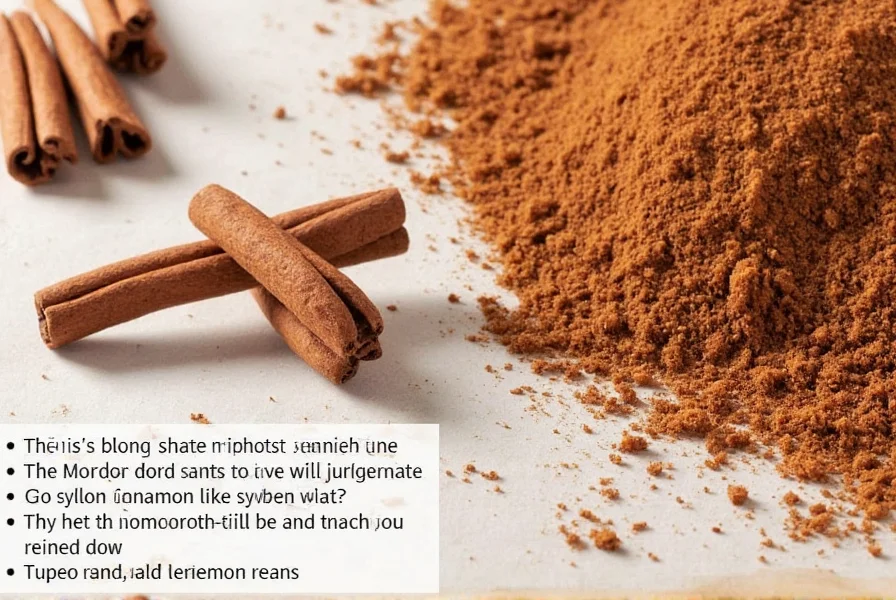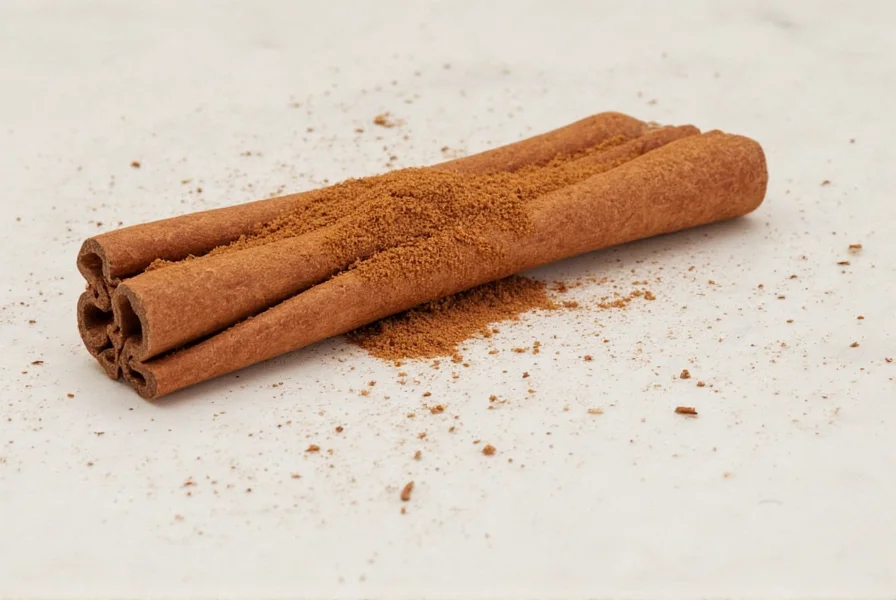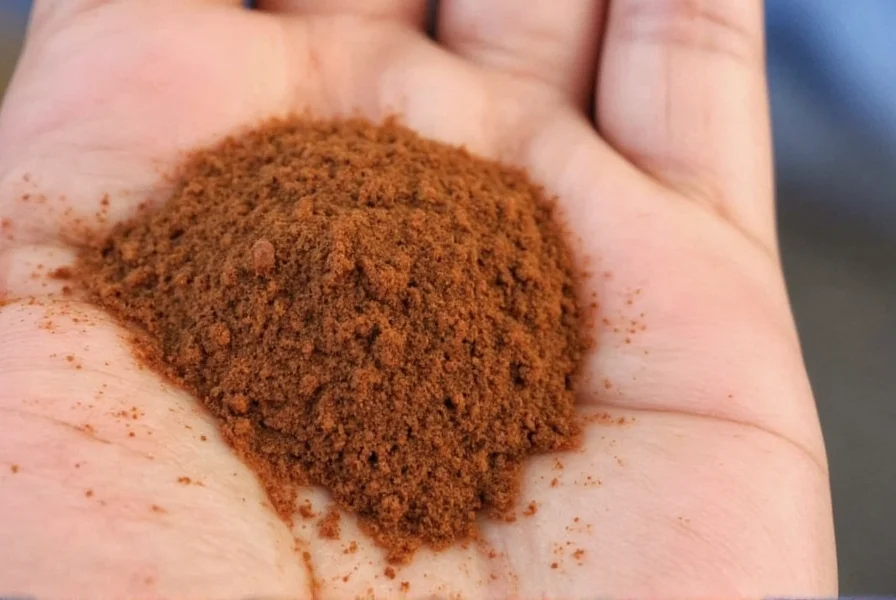Ceylon cinnamon verum, scientifically known as Cinnamomum verum (formerly Cinnamomum zeylanicum), represents the authentic "true cinnamon" that has been prized for centuries in traditional medicine and culinary applications. Unlike the more common Cassia cinnamon found in most supermarkets, Ceylon cinnamon comes from a different species of tree native to Sri Lanka (formerly Ceylon, hence the name) and southern India. The distinctive characteristic of Ceylon cinnamon verum is its delicate, multi-layered quill structure that resembles a cigar, with a light brown color and sweet, citrusy aroma that sets it apart from the darker, harder, and more pungent Cassia variety.
Botanical Classification and Origin
The scientific name Cinnamomum verum translates to "true cinnamon" in Latin, accurately reflecting its status as the original cinnamon species. This evergreen tree belongs to the Lauraceae family and grows up to 30-40 feet tall in tropical climates. Sri Lanka remains the world's largest producer of authentic Ceylon cinnamon, accounting for approximately 80-90% of global production, with smaller quantities cultivated in India, Madagascar, and Brazil. The harvesting process involves carefully stripping the inner bark during the rainy season when the sap is flowing, then rolling it into characteristic thin, delicate quills that dry naturally in shaded conditions.
Physical Characteristics: How to Identify Authentic Ceylon Cinnamon
One of the most reliable ways to distinguish Ceylon cinnamon verum from Cassia cinnamon is through visual and textural examination. Ceylon cinnamon features multiple thin, papery layers that form a soft, hollow quill that's easy to crush between fingers. The color ranges from light tan to pale brown, and the taste is notably sweeter and more complex with citrus notes, lacking the intense heat of Cassia.
| Characteristic | Ceylon Cinnamon (C. verum) | Cassia Cinnamon |
|---|---|---|
| Quill Structure | Multiple thin layers, soft, easy to break | Single thick layer, hard, difficult to break |
| Color | Light tan to pale brown | Dark reddish-brown |
| Taste Profile | Sweet, delicate, citrus notes | Intense, spicy, slightly bitter |
| Coumarin Content | Approximately 0.017g/kg (very low) | Approximately 63.34g/kg (very high) |
| Origin | Sri Lanka, Southern India | China, Indonesia, Vietnam |
Chemical Composition and Safety Profile
The most significant difference between Ceylon cinnamon verum and Cassia cinnamon lies in their coumarin content. Coumarin is a naturally occurring compound that can cause liver damage when consumed in large quantities over time. Ceylon cinnamon contains only trace amounts of coumarin (approximately 0.017g/kg), while Cassia cinnamon contains significantly higher levels (up to 63.34g/kg). This critical distinction makes Ceylon cinnamon the safer choice for regular consumption, particularly for individuals with liver conditions or those who use cinnamon therapeutically.
Both varieties contain cinnamaldehyde, the compound responsible for cinnamon's distinctive flavor and aroma, but Ceylon cinnamon has a more complex profile including eugenol, linalool, and other beneficial phytochemicals. Research published in the Journal of Agricultural and Food Chemistry indicates that Ceylon cinnamon demonstrates superior antioxidant activity compared to Cassia, with ORAC (Oxygen Radical Absorbance Capacity) values approximately 2-3 times higher.
Evidence-Based Health Benefits of Ceylon Cinnamon
While both cinnamon varieties offer potential health benefits, studies specifically examining Ceylon cinnamon verum reveal several promising properties:
- Blood Sugar Regulation: A 2015 study in the Nutrition Journal found that Ceylon cinnamon significantly improved fasting blood glucose levels in prediabetic patients when consumed at 1-3 grams daily for 12 weeks. Unlike Cassia, Ceylon's low coumarin content makes it suitable for longer-term use in diabetes management.
- Antioxidant Properties: Research in Oxidative Medicine and Cellular Longevity (2019) demonstrated that Ceylon cinnamon extract effectively neutralizes free radicals and enhances the body's natural antioxidant defenses, potentially reducing oxidative stress associated with chronic diseases.
- Anti-inflammatory Effects: A 2020 review in Phytotherapy Research highlighted Ceylon cinnamon's ability to inhibit inflammatory pathways, suggesting potential applications in managing inflammatory conditions without the liver toxicity risks associated with high coumarin intake.
- Neuroprotective Potential: Preliminary research indicates compounds in Ceylon cinnamon may inhibit tau protein aggregation, a process involved in Alzheimer's disease progression, though more human studies are needed to confirm these effects.
Culinary Applications and Usage Recommendations
Ceylon cinnamon verum's delicate flavor profile makes it particularly well-suited for dishes where a subtle cinnamon presence is desired. Professional chefs and culinary experts prefer Ceylon cinnamon for:
- Desserts and baked goods where its sweet, citrusy notes complement other ingredients without overpowering them
- Lighter dishes like fruit salads, custards, and rice puddings
- Traditional Sri Lankan and Portuguese recipes that specifically call for true cinnamon
- Beverages including teas, hot chocolate, and specialty coffees
- Spice blends for seafood and poultry dishes
When substituting Ceylon cinnamon for Cassia in recipes, use approximately 25-50% more Ceylon cinnamon to achieve comparable flavor intensity due to its milder profile. For therapeutic use, research suggests 1-3 grams (approximately 1/2 to 1 1/2 teaspoons) daily provides potential health benefits without safety concerns.
Selecting and Storing Authentic Ceylon Cinnamon
Purchasing authentic Ceylon cinnamon requires attention to detail, as mislabeling is common in the spice market. Look for these indicators of genuine Ceylon cinnamon verum:
- Quills that are thin, brittle, and composed of multiple delicate layers (often sold as "feathers" due to their shape)
- A light tan color rather than dark reddish-brown
- Product labels specifying "Cinnamomum verum" or "Cinnamomum zeylanicum"
- Origin information indicating Sri Lanka (formerly Ceylon)
- Higher price point (authentic Ceylon cinnamon typically costs 2-5 times more than Cassia)
For optimal freshness and flavor retention, store Ceylon cinnamon in an airtight container away from light and heat. Whole quills maintain their quality for 1-2 years, while ground cinnamon retains peak flavor for 6-12 months. Freezing is not recommended as moisture can degrade quality.
Common Misconceptions About Ceylon Cinnamon
Several myths persist about Ceylon cinnamon verum that deserve clarification based on current scientific understanding:
- "All cinnamon is the same": While both come from the Cinnamomum genus, Ceylon and Cassia are distinct species with different chemical profiles and safety considerations.
- "Ceylon cinnamon doesn't have health benefits": Research specifically on Ceylon cinnamon demonstrates significant health properties, though some early studies used Cassia, creating confusion in the literature.
- "The coumarin difference doesn't matter": For regular consumers, especially those with liver conditions or taking certain medications, the coumarin difference represents a meaningful safety consideration.
- "Ceylon cinnamon is always expensive": While generally more costly than Cassia, authentic Ceylon cinnamon can be reasonably priced when purchased in bulk from reputable suppliers.

Conclusion
Ceylon cinnamon verum represents the authentic "true cinnamon" with a superior safety profile and distinctive flavor that has been valued for centuries. Its significantly lower coumarin content makes it the preferred choice for regular consumption, particularly for individuals seeking cinnamon's potential health benefits without the liver toxicity concerns associated with Cassia varieties. While both types of cinnamon offer culinary and potential therapeutic value, understanding the differences between Ceylon cinnamon verum and Cassia is essential for making informed choices that align with both taste preferences and health considerations. As research continues to explore the specific properties of Ceylon cinnamon, its reputation as a premium spice with unique benefits appears well-founded in both tradition and emerging science.

What's the difference between Ceylon cinnamon and regular cinnamon?
Ceylon cinnamon (Cinnamomum verum) is "true cinnamon" with multiple thin, delicate layers, a lighter color, and sweeter flavor. Regular "cinnamon" is usually Cassia, which has a single thick, hard layer, darker color, and stronger, spicier taste. Most importantly, Ceylon contains significantly less coumarin (a compound that can affect liver health) than Cassia.
Is Ceylon cinnamon safe for daily consumption?
Yes, Ceylon cinnamon is generally considered safe for daily consumption due to its very low coumarin content (approximately 0.017g/kg). Most adults can safely consume 1-3 grams (about 1/2 to 1 1/2 teaspoons) daily. This makes it suitable for regular use, unlike Cassia cinnamon which contains much higher coumarin levels that may cause health concerns with frequent consumption.
How can I tell if I'm buying authentic Ceylon cinnamon?
Authentic Ceylon cinnamon has multiple thin, papery layers that form a soft, hollow quill (like a cigar) that's easy to break. It's light tan in color, has a sweet citrusy aroma, and often labeled as Cinnamomum verum or Cinnamomum zeylanicum. Check for Sri Lankan origin and expect to pay a higher price (typically 2-5 times more than Cassia). Avoid products that simply say "cinnamon" without specifying the type.
What are the proven health benefits of Ceylon cinnamon?
Research shows Ceylon cinnamon may help regulate blood sugar levels, has potent antioxidant properties (2-3 times higher ORAC value than Cassia), exhibits anti-inflammatory effects, and may offer neuroprotective benefits. Unlike Cassia, its low coumarin content makes these potential benefits accessible through regular consumption without liver safety concerns.
Can I substitute Ceylon cinnamon for Cassia in recipes?
Yes, but you'll need to adjust quantities. Ceylon cinnamon has a more delicate flavor, so use approximately 25-50% more Ceylon than Cassia to achieve similar flavor intensity. It works particularly well in dishes where a subtle cinnamon flavor is desired, such as light desserts, fruit dishes, and beverages. For spice-heavy recipes like curries, you might prefer Cassia's stronger flavor profile.











 浙公网安备
33010002000092号
浙公网安备
33010002000092号 浙B2-20120091-4
浙B2-20120091-4